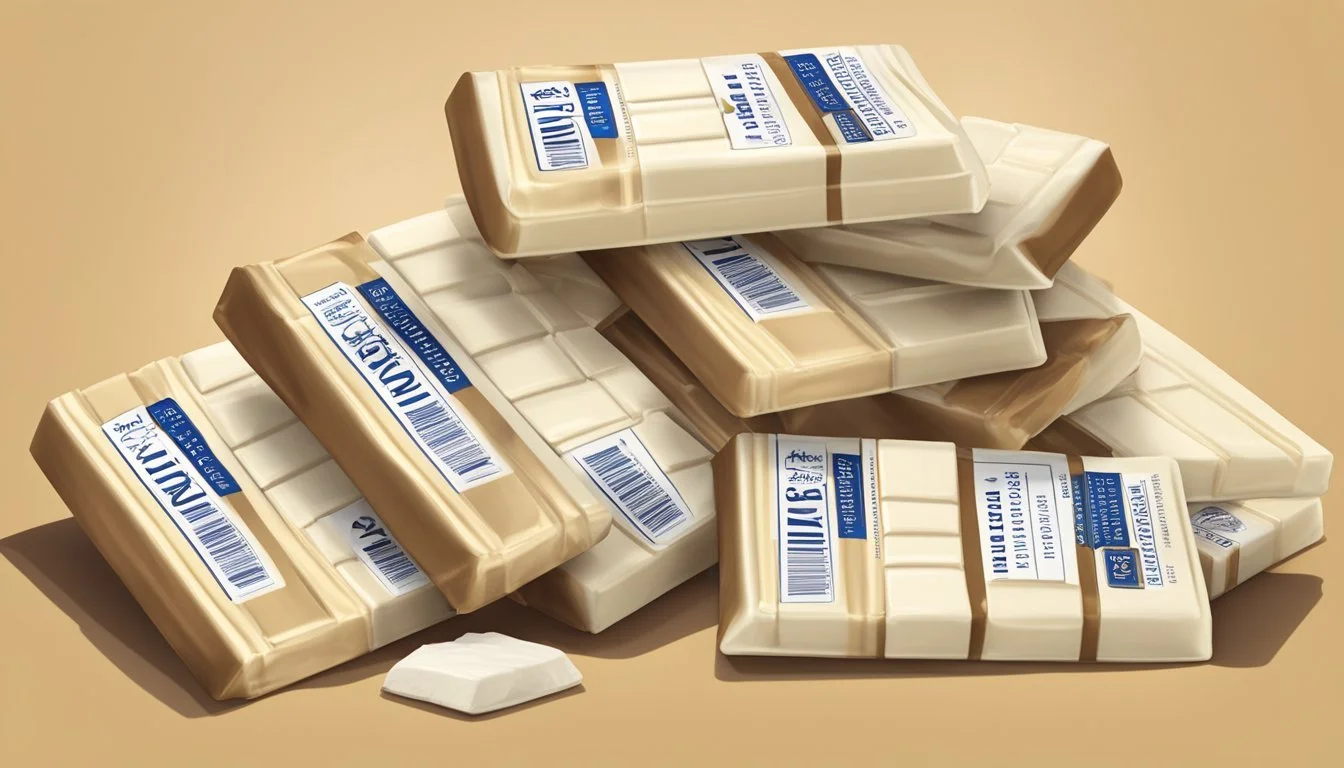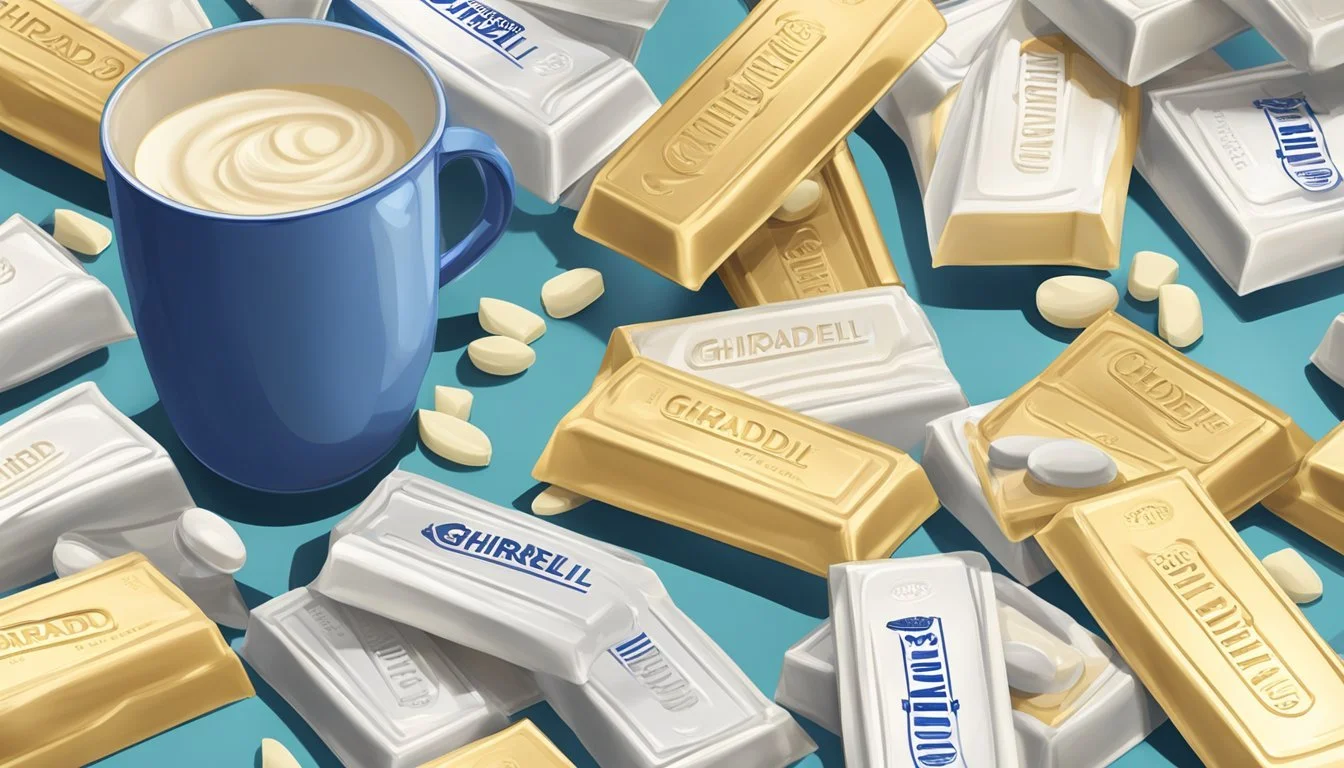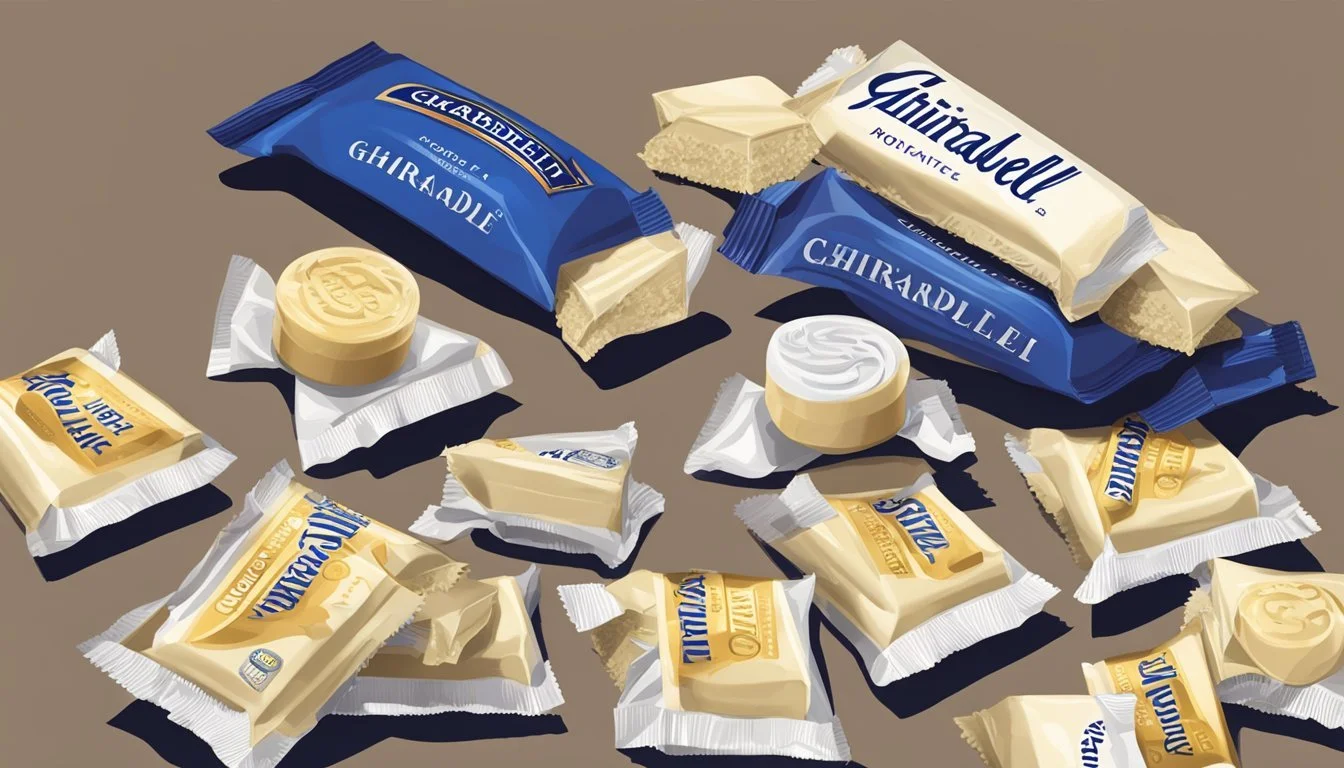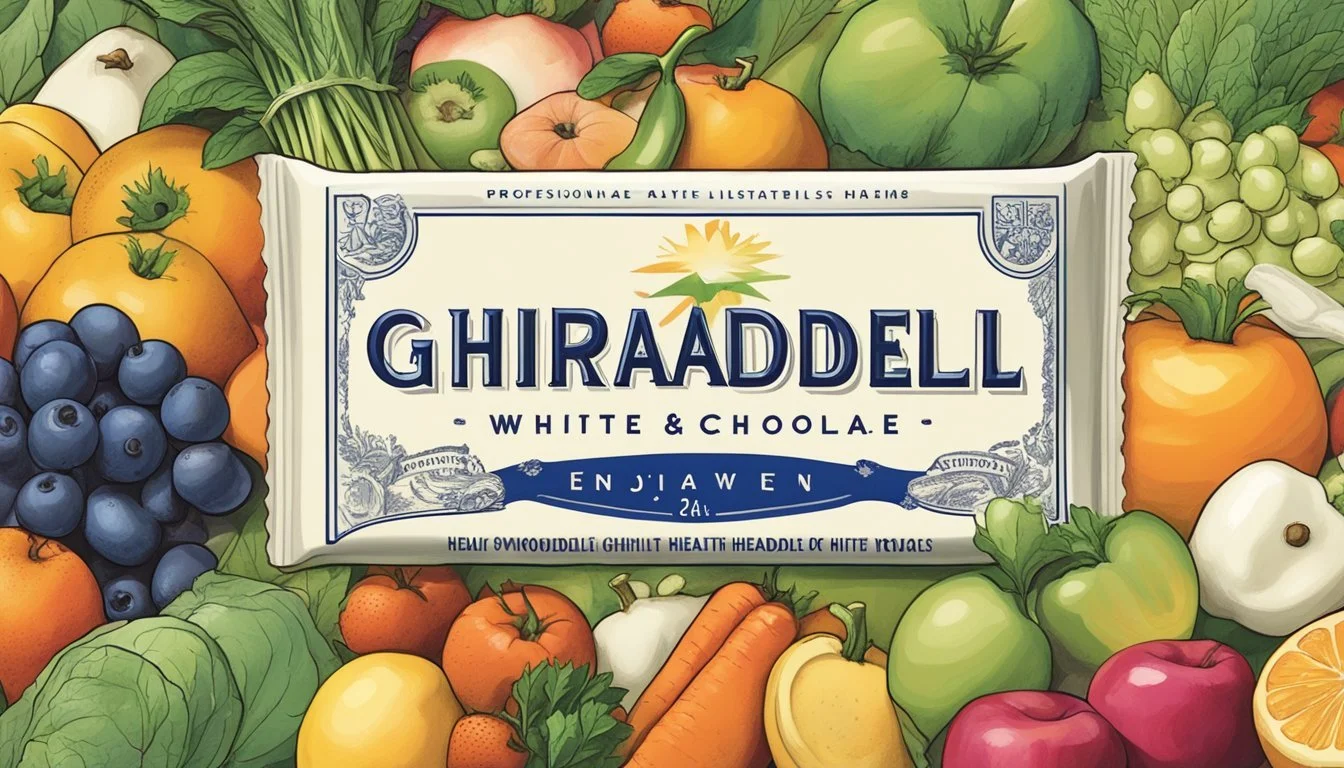How much Ghirardelli white chocolate per day is too much?
Understanding Limits for Safe Consumption
Indulging in the creamy luxury of Ghirardelli white chocolate (What wine goes well with chocolate?) is a treat many enjoy. White chocolate differs from its dark counterpart in composition and flavor, primarily containing cocoa butter, milk solids, milk fat, sugar, and flavorings. Unlike dark chocolate, it doesn't include cocoa powder or chocolate liquor, which gives it a distinct pale color and creamier taste. For those with a sweet tooth, the key to enjoying white chocolate is to balance pleasure with moderation.
Ghirardelli, a reputable brand in the chocolate industry, provides high-quality white chocolate that appeals to a wide range of palates. However, the consumption of white chocolate should be considered within the broader context of dietary guidelines and individual health goals. Consuming white chocolate in excess can lead to an increased intake of sugar and calories, potentially impacting overall health. The ideal portion size and frequency of indulgence in white chocolate may vary from person to person, depending on their lifestyle, caloric requirements, and dietary restrictions.
When pondering how much white chocolate is too much, it is important to gauge the impact of added sugars and fats on one's diet. The recommendation for an average adult is to limit the consumption of added sugars to less than 10% of daily caloric intake. Considering these guidelines, enjoying white chocolate in small amounts can fit into a well-balanced diet, provided it is accompanied by mindful eating habits and an awareness of one's personal nutritional needs.
Understanding White Chocolate
White chocolate is often enjoyed for its creamy and sweet flavor profile, distinct from its dark and milk counterparts. Its composition and how it differs from other types of chocolate is essential in gauging how much can be consumed.
Defining White Chocolate
White chocolate is a confection made primarily from cocoa butter, sugar, and milk. However, unlike dark chocolate and milk chocolate, it does not contain any cocoa solids. This lack of cocoa solids is what gives white chocolate its pale color and different taste profile.
Key Ingredients of White Chocolate
The main ingredients in white chocolate are:
Cocoa butter: The fat extracted from the cacao bean, which is a crucial component, giving white chocolate its smooth texture.
Milk: Either in liquid or powder form, providing creaminess.
Sugar: Added to sweeten and enhance the flavor.
Each ingredient plays a pivotal role in white chocolate's texture and taste. The proportion of these ingredients can vary among manufacturers, affecting the final product's quality and flavor.
White Chocolate versus Dark and Milk Chocolate
When comparing white chocolate to dark chocolate and milk chocolate, the key difference lies in the cacao content. Dark chocolate is rich in cocoa solids, giving it a strong, bittersweet taste and darker color. Milk chocolate contains both milk solids and cocoa solids, offering a balance between creaminess and chocolate flavor.
Here's a brief comparison:
White Chocolate: Contains cocoa butter, milk, and sugar; no cocoa solids.
Milk Chocolate: Contains cocoa butter, milk, sugar, and 10-50% cocoa solids.
Dark Chocolate: Contains cocoa butter, sugar, and greater than 50% cocoa solids; may or may not contain milk.
Understanding these differences is crucial for consumers looking to balance their chocolate consumption with their dietary needs and preferences.
Health Impacts of White Chocolate
When considering the health impacts of white chocolate, specifically from producers like Ghirardelli, it is crucial to examine its nutritional content and how its consumption may affect cardiovascular health and potential diseases such as diabetes and insulin resistance.
Nutritional Content
White chocolate provides calories and a small amount of protein, but lacks the fiber and plant compounds found in darker chocolates. A typical 1-ounce serving of Ghirardelli white chocolate offers around 150 calories and 1 gram of protein, but no significant amount of fiber.
Sugar and Fat Content
White chocolate is high in both sugar and fat. A 1-ounce serving contains approximately 17 grams of carbohydrates, mainly from added sugars, and 9 grams of fat, which includes 5 grams of saturated fat. Overconsumption can lead to weight gain and increased risk for heart disease.
Effects on Cardiovascular Health
White chocolate lacks the substantial amounts of flavonoids present in dark chocolate that are linked to heart health. Frequent consumption of foods high in saturated fat can elevate LDL cholesterol levels, potentially leading to clogged blood vessels and an increased risk for stroke and heart disease.
Influence on Diabetes and Insulin Resistance
The high sugar content in white chocolate can impact blood sugar levels. Regularly consuming foods with added sugar can increase the risk of developing type 2 diabetes and can cause or exacerbate insulin resistance, whereby the body's ability to process insulin is impaired.
Daily Chocolate Consumption
When considering the daily consumption of Ghirardelli white chocolate, it is imperative to be mindful of serving sizes and the daily value intake. This ensures that one's indulgence doesn’t surpass what is nutritionally recommended.
Recommended Serving Sizes
According to product information, the serving size for Ghirardelli white melting wafers is 2 tablespoons (30g). This serving size provides approximately 230 calories. Given that dark chocolate can contain 70 to 85 percent cocoa and approximately 170 calories per 1-ounce serving, white chocolate is generally higher in sugar content and therefore could have more calories per equivalent weight because it lacks significant cocoa solid percentages.
Calculating Daily Value Intake
The % Daily Value (DV) provides guidance on the nutrients in a serving of food in relation to a 2,000 calorie-per-day diet. For Ghirardelli white chocolate:
Calories: 230 per serving
Fat Content: The label indicates a significant percentage coming from fat, with 55% of the calories derived from it.
Sugar content, while not explicitly detailed in the provided snippets, typically comprises a higher percentage of white chocolate's composition compared to dark chocolate varieties.
One should use this information to calculate how much white chocolate fits into their daily caloric and nutritional goals, bearing in mind that excess consumption can lead to exceeding daily caloric needs and potentially contribute to unwanted weight gain and associated health risks.
Potential Risks and Considerations
When considering the daily consumption of Ghirardelli white chocolate, it is important to weigh the potential risks associated with its ingredients and contaminants. Close attention to these factors can guide consumers in making safer and more informed choices regarding their chocolate intake.
Caffeine and Theobromine Content
White chocolate typically contains minimal amounts of caffeine and theobromine since it is made primarily from cocoa butter rather than cocoa solids. However, sensitive individuals may still want to monitor their intake to avoid any potential discomfort.
Allergies and Intolerances
Individuals with allergies to dairy products should exercise caution as white chocolate contains milk solids. Moreover, those who have a sensitivity to soy lecithin, an emulsifier often used in chocolate production, should also be aware of this ingredient in white chocolate varieties.
Saturated Fat and Cholesterol Issues
A serving of white chocolate can contain high levels of saturated fats which, when consumed in excess, may contribute to increased levels of bad cholesterol (LDL). Overconsumption could raise the risk of cardiovascular diseases.
Nutritional Element Potential Impact Saturated fat Raises LDL ("bad" cholesterol) Cholesterol Linked to heart disease
Cadmium and Lead Concerns
Chocolate, in general, may sometimes contain traces of heavy metals such as cadmium and lead. Although the levels present in white chocolate are typically lower than in dark chocolate, consumption should still be moderated to reduce potential health risks.
Consumers should consider the recommended limits for heavy metals and seek out brands with testing protocols to ensure lower levels of contaminants. Too much lead or cadmium can affect blood pressure and may lead to other long-term health issues.
Ghirardelli White Chocolate Specifics
In this section, we examine the esteemed Ghirardelli brand and what sets its white chocolate apart, ranging from its storied pedigree to the quality and origination of its ingredients.
Brand History and Reputation
Ghirardelli represents a legacy in chocolate making. Founded in 1852, it stands as one of the oldest chocolate companies in the United States. The company has built a reputation for crafting high-quality chocolate products, including their popular white chocolate squares. Ghirardelli's white chocolate is known for a smooth, creamy taste, which is attributed to meticulous processing and proprietary recipes.
Ingredient Quality and Source
Each white chocolate square is a product of ingredient selection and chocolate expertise. Ghirardelli ensures its white chocolate is made using:
Cocoa Butter: The primary fat source derived from cacao beans, essential for smooth texture.
Whole Milk Powder: Adds to the richness and creaminess of the white chocolate.
While cacao is less present in white chocolate compared to dark varieties, the importance of source quality is not forsaken. While Ghirardelli white chocolate may not boast significant flavanol content, it does provide some magnesium and phosphorus, minerals present in cocoa butter. Ghirardelli white chocolate products do not primarily focus on health benefits like nitric oxide production, commonly associated with darker chocolate due to higher flavanol content. Instead, their emphasis is on flavor and texture which is indicative of their specific brand of white chocolate confections.
Balancing Enjoyment and Health
When incorporating Ghirardelli white chocolate into one's diet, the priority should be finding a balance between savoring its sweet, satisfying flavor and considering its impact on health. This balance hinges on strategic inclusion and mindful indulgence.
Incorporating White Chocolate in a Balanced Diet
Consumers can enjoy Ghirardelli white chocolate as part of a balanced diet by prioritizing moderation. An individual should consider the added sugars present in white chocolate, which lack the dietary fiber, flavanols, and minerals found in darker chocolates.
One serving of Ghirardelli white chocolate flavored powder, for instance, contains approximately 150 calories and 18% of the daily value for saturated fat. Given the general guideline of 2,000 calories per day, integrating a serving size of Ghirardelli white chocolate should be an occasional treat rather than a daily occurrence.
Nutrient Amount per Serving % Daily Value* Calories 150 Total Fat 4g 6% Saturated Fat 3g 18% Total Sugars -- --
Nutrient values are based on Ghirardelli White Chocolate Flavored Powder serving size
Mindful Consumption and Moderation
Moderation is key for healthful enjoyment of white chocolate. Individuals should remain aware of the quantity they consume, as excessive intake can contribute to health issues, such as obesity, heart disease, and diabetes. To maintain a balanced approach, it is recommended to savor small amounts of white chocolate, preferably as part of a meal or combined with foods high in fiber to slow sugar absorption.
Conclusion
The consumption of Ghirardelli white chocolate, like any form of confectionery, should be moderated according to dietary guidelines. Excessive intake can lead to surpassing the daily recommended limit of added sugars, which is 6 teaspoons (25 grams) for women and 9 teaspoons (38 grams) for men, according to the American Heart Association.
Given that white chocolate typically contains a higher sugar content compared to dark chocolate, individuals are advised to enjoy Ghirardelli white chocolate in smaller portions. One could consider rationing their intake to a few squares of chocolate to avoid consuming too much added sugar.
It is important to integrate the indulgence of sweets into a balanced diet that includes a variety of nutrients. One's overall health can benefit from mindful consumption, keeping in mind that certain chocolates can contain beneficial minerals.
Those concerned about their sugar intake or managing conditions such as diabetes should be particularly mindful and may benefit from consulting a dietitian. They can assess individual dietary needs and advise on appropriate consumption levels. Moderation and balance are key, ensuring that the enjoyment of Ghirardelli white chocolate remains a pleasurable addition to one’s diet without negative health impacts.








